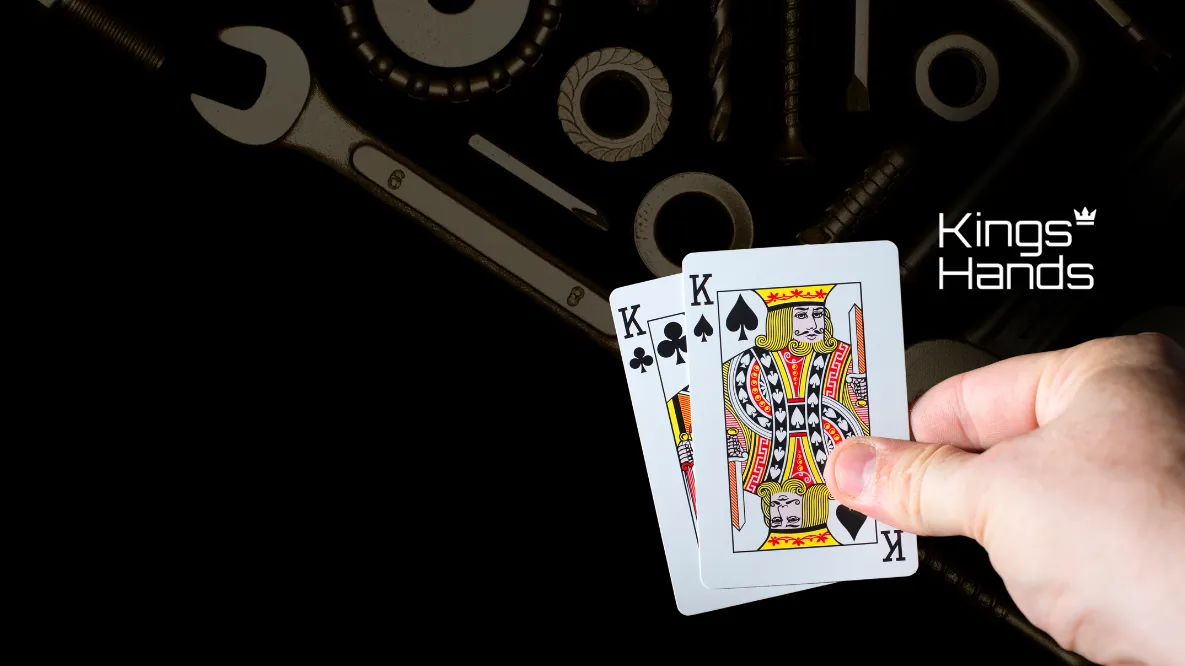While players often control their body movements above the table, you’ll find that many players aren’t as concerned about what happens below the table. There seems to be an impression that just because it happens below the table, no one can see it happen – but that’s not true. As long as you’re sitting close enough to your opponent, you get access to a whole world of tells that many players don’t even consider.
In Part Six of our Poker Tells series, we’ll be looking at the most common poker tells that you can spot by looking at your opponents’ legs and feet, how you can spot them, and how you can use these tells to your advantage.
Leg Shaking At The Poker Table
Restless Legs Syndrome is something that’s common among many people, not just at the poker table. The cause of leg shaking varies from person to person – it may be the manifestation of anxiety, it could be the result of stimulants, or it could be a symptom of another illness.
When you’re at the poker table, it’s your job to find out exactly what it means when your opponent starts doing their best kangaroo impression. As it’s commonly related to anxiety, many people automatically assume that leg shaking at the poker table is an expression of that anxiety. However, that’s not always the case.
Some players will shake their legs when they’re excited about having a big hand; the adrenaline rushing through their system makes them want to move, so they move the part of the body that’s hard to see from the table. On the other hand, for other players, leg shaking is a symptom of their anxiety, which gets triggered when holding a weak hand in a big pot.
Tells like this can be extremely useful if you know how they reflect your opponent’s thoughts. However, they require you to pay close attention to their hands to work out whether this tell means they’re strong or weak. If you spot someone who shakes their leg during hands, make a mental note to watch their hands whenever they’re involved, and pay particular attention to their showdowns. After a couple of orbits, you should start to build an idea of whether the shaking means they’re strong or weak.
How Do I Counter It?
Before you start using this tell, it’s important to ascertain exactly what it means for your specific opponent. As we outlined above, someone’s leg shaking uncontrollably at the table can mean different things to different people, so pay attention to how they play when their leg starts shaking.
If the leg shaking means strength, you’ll want to counter them by folding more often when they bet or raise and playing more passively against a check. After all, if their range is stronger than average, we don’t want to be shovelling money into the pot without having the goods ourselves!
However, if the leg shaking means weakness, you can exploit this by calling a wider range against their bet and by playing more aggressively when they check. You expect their range to be weaker than normal, which means your bluffs are likely to work more often, so don’t be afraid to pull the trigger.
Happy Feet At The Poker Table
We’ve decided to separate foot tapping and leg shaking into separate categories, even though many people consider them the same thing. We’ve made this distinction as we consider leg shaking to be an uncontrollable action, whereas foot tapping is something that’s done consciously. It’s the difference between rhythmically tapping along to the music and violently shaking as a result of stimuli.
So, now that we’ve cleared up the difference, what does foot tapping at the table mean? Someone casually tapping their foot along to whatever background music is playing in the casino is someone who’s comfortable with their situation. They’re not feeling particularly stressed or anxious and likely have a stronger range than average.
Most of the time, when someone is relaxed at the table, it’s indicative of a strong holding, and you have to be pretty relaxed if you’re tapping your foot to the beat while you’re playing!
How Do I Counter It?
As we believe that this tell means someone is relaxed about their situation, it means they likely have a stronger range than they usually would in that spot. This means that to counter it, we need to fold more often to their bets and raises and try to get to showdown as cheaply as possible. Start by making small adjustments to your ranges, and when you feel more confident in this tell, you can make larger adjustments to exploit your opponent.
Stiff Legs
This is the polar opposite of the leg tapping tell; rather than your opponent burrowing their way through the floor with their leg, they’ve turned into a statue at the table. Now, many players choose to keep still during a hand to try and prevent themselves from giving away tells. You’re not going to pick up much from opponents like these, and them being stiff isn’t going to be much of an indication of strength or weakness.
However, if your opponent is usually pretty relaxed at the table, you can start making inferences when their body starts stiffening up. Usually, players will try to minimize their movements as much as possible when they’re bluffing. This is to draw as little attention to themselves as possible, as they don’t want to be stared down by their opponent while trying to pull off a big bluff.
Therefore, if your usually relaxed opponent suddenly stiffens up in the middle of the hand, it’s likely they have a weaker-than-average range in this situation.
How Do I Counter It?
A player stiffening up in the middle of the hand is often an indicator of weakness, so we need to adjust our strategy to exploit that weakness. The best way to do that is to call wider and play more aggressively against their bets and raises. You can also play more aggressively when they check, as it’s far more likely that they’ll fold to our bluffs.
Summary
It’s easy to get caught up in everything that’s happening above the table, but there’s a lot you can learn by taking in the full picture. Players tend to let their guard down if they think they can’t be seen, and the tells given away by the legs and feet are the perfect example of that. If you can see what’s happening below the table, you can gain an insight into how your opponent is really feeling about their hand, which will allow you to better exploit them at the table.
Join us next time for the final part of our Poker Tells series, where we’ll wrap up the key points from the series as well as tips on how to best use poker tells to adjust your strategy. Make sure you join our PokerDeals Facebook group or follow us on Instagram to be notified of the next article in the series.





















